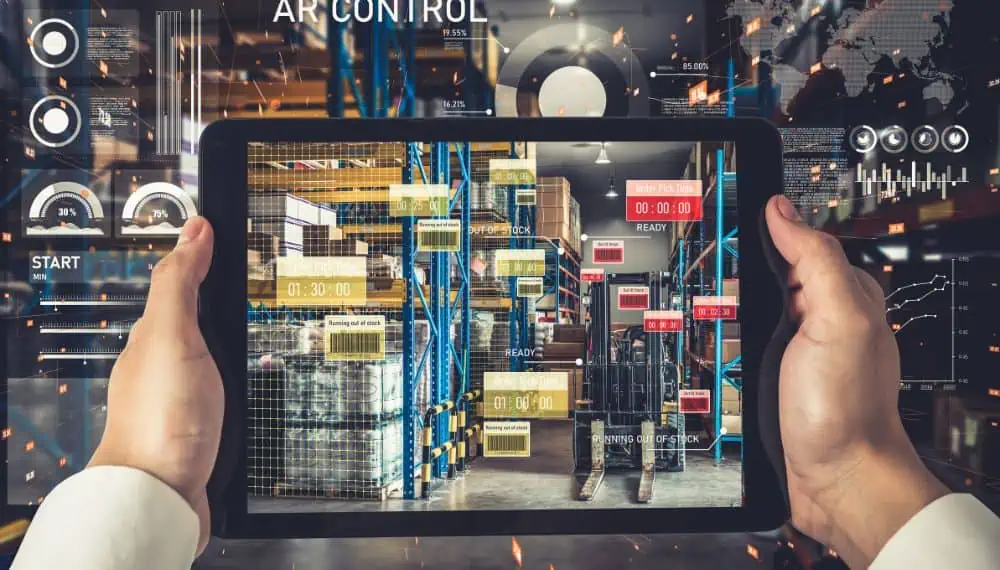As grocery stores aim to modernize their operations, many stores are exploring smart technology options to enhance the shopping experience for customers. Smart shelves, which are electronically connected shelving units commonly used in retail stores, play a relevant role in inventory management.
These intelligent shelves or smart shelf systems have a combination of digital displays, RFID tags, and sensors to deliver comprehensive product information, suggest related items for cross-selling, and facilitate marketing efforts. Moreover, they offer retailers valuable insights into customer shopping behaviors and preferences.
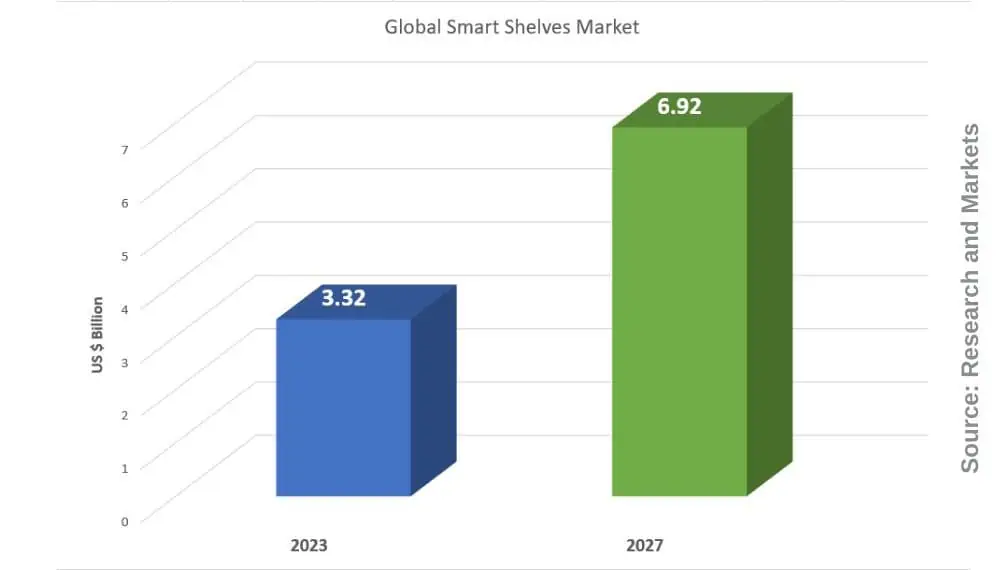
Source: Research and Markets
The adoption of technology like ESLs goes beyond just relieving store associates of manual tasks; it also serves to improve operational efficiencies and tap into innovative retail media opportunities. In this blog post, we will understand the reasons why smart shelf labels are gaining popularity among grocers.
Different Types of Smart Shelf Technology and Their Functionality
These intelligent smart shelves include sensors and devices that enhance the user experience. These devices include proximity sensors, microphones, 3D cameras, NFCs, RFID tags, electronic printed tags, and optical sensors.
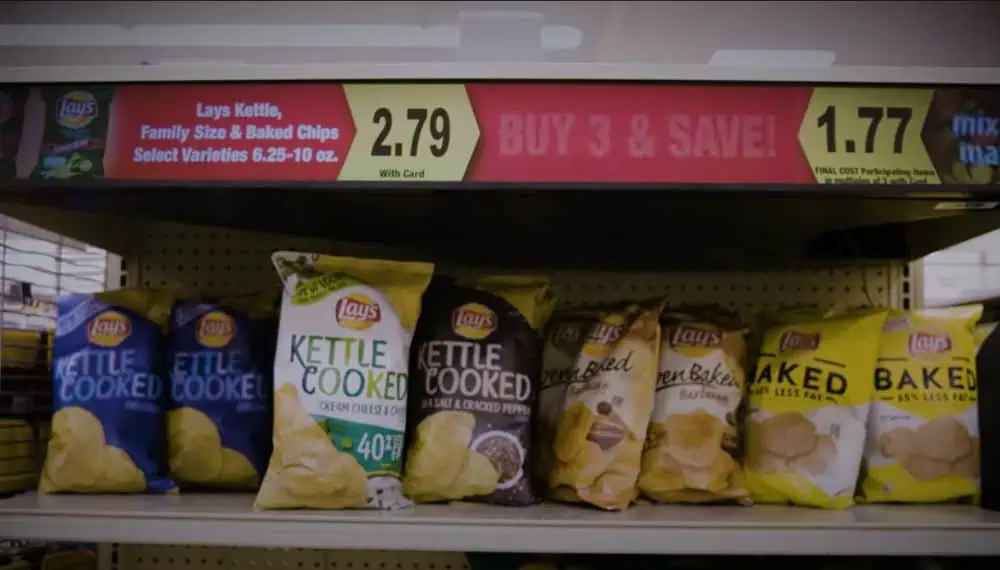
Notably, modern shelves have integrated with Electronic Shelf Label or ESL that dynamically display real-time product information and promotions using electronic or digital paper. Before we go into details of Smart shelf labels, it’s crucial to understand other components of smart shelving that could help grocery store owners:
Shelf Sensors
Smart shelves have several sensors to improve inventory management. Weight sensors, for instance, track product quantities as items are removed, promptly identifying when stock levels are low. This helps in efficient inventory control and prevents customer dissatisfaction due to unexpectedly empty shelves.
Additionally, the NFC sensors detect the proximity and the duration of customer interaction within a particular Aisle or shelf. This data provides valuable insights into customer preferences. It can also be used with a dedicated app on customers’ smartphones, offering customized ads based on recent purchases they made.
Shelf Camera
Shelf cameras play a pivotal role in retail operations. Placed on opposing shelves, they continuously monitor products live, detecting any irregularities and alerting staff as needed. They can also ensure planogram compliance, ensuring that products are correctly positioned.
These cameras are designed specifically for retail stores. It appears as an ESL but is equipped with a sophisticated camera, wireless system, and other IoT capabilities.
Digital Signage
Digital signage serves as a modern alternative to traditional paper posters. It offers greater flexibility for updating content, making it ideal for showcasing high-margin items and time-sensitive promotions. Digital signs can display advertisements, video testimonials, product demonstrations, and interactive content for customers.
These smart signs effectively capture customers’ attention, influence their behavior, and facilitate decision-making, and they also enhance their overall buying experience.
ESL
ESLs replace traditional paper price tags with intelligent, connected alternatives. These labels are integrated into central systems. It can be automatically updated, eliminating manual labor for price adjustments.
Smart shelving, equipped with these technologies, revolutionizes the retail landscape by streamlining operations, enhancing customer engagement, and providing retailers with valuable data to optimize their offerings and services.
Why Smart Shelf Labels Is A Practical Solution?
Smart shelf labels involve the integration of wireless technology into shelves, enabling retail and industrial businesses to automate various functions such as dynamic pricing, inventory tracking, omnichannel operations, and more.
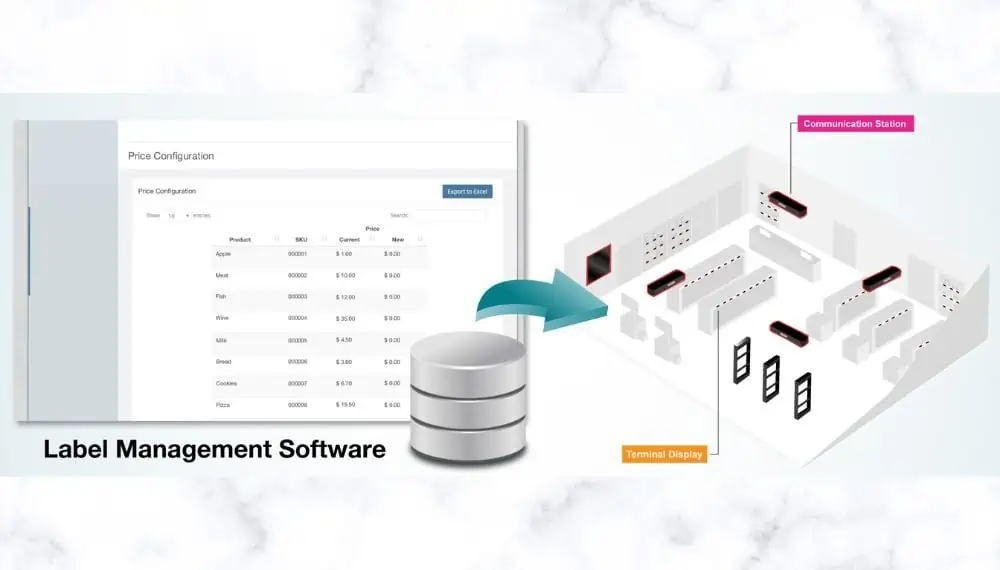
Source: Wikipedia
One highly effective way to transform your shelves into smart solutions is by utilizing digital labels. In today’s business landscape, particularly within the retail sector, many companies are adopting ESLs to digitize their shelving units, streamlining their operational processes.
Traditionally, retailers relied on paper labels to update prices and display discounts on products. However, this approach is time-consuming and can detract from attending to customer needs. By transitioning to ESLs, businesses can eliminate the need for paper labels and enhance the convenience of price updates throughout their entire store.
Grocery Stores Inclining Towards Smart Shelf Labels
As the cost of ESLs has decreased in recent years and labor expenses have simultaneously risen, experts in the grocery industry predict rapid adoption of this technology.
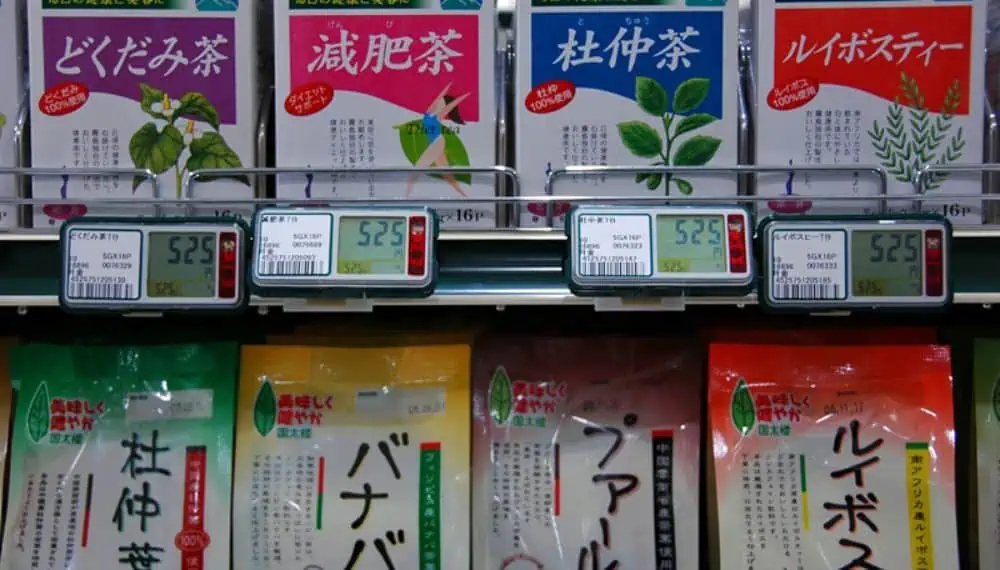
Image source: Wikipedia
Simultaneously, ESL vendors are actively addressing challenges related to battery life and network connectivity in their newer device models, enhancing the reliability and consistency of the technology. This technology offers various benefits that attract grocers from different parts of the US, UK, and Australia. Here are some potential reasons for this popularity:
- ESLs offer retailers a comprehensive view of pricing data, inventory levels, and the occurrence of out-of-stock items. They effectively address the significant issue of fluctuating prices and the potential revenue loss that grocery retailers can incur when pricing inaccuracies occur.
- In the absence of ESLs, employees are required to replace thousands of paper tags each week in supermarkets, representing a substantial labor investment for minimal impact.
- ESLs streamline stocking and improve the efficiency of e-commerce order fulfillment. Tags equipped with LED lights can flash to assist with pick-to-light and stock-to-light operations, enabling quicker product location.
- ESLs empower shoppers to interact with them through their smartphones, simplifying access to and downloading digital in-store promotions.
- These labels also employ light indicators to aid shoppers in finding products and display vital product information, such as whether an item is gluten-free, organic, kosher, or eligible for EBT SNAP benefits.
- For products with multiple facings, the combination of flashing LEDs and inventory management insights accelerates the process for store employees or customers seeking to locate or restock items.
- To address out-of-stock situations, ESLs can provide a QR code on the tag, allowing interested individuals to scan it and receive notifications when the product returns to the store.
Smart Shelf Labels – A Smart Future-Ready Solution?
Smart Shelf Label systems serve as a crucial tool for retailers, enabling them to display up-to-the-minute product prices on their shelves. These labels automatically reflect any new pricing updates generated by the pricing system, ensuring accuracy and consistency. Notably, the global market for these ESL tags with the most substantial revenue share is divided into five key countries – the US, France, Germany, China, and Japan. The global retail automation market is projected to reach a significant milestone of over $23 billion by 2027.
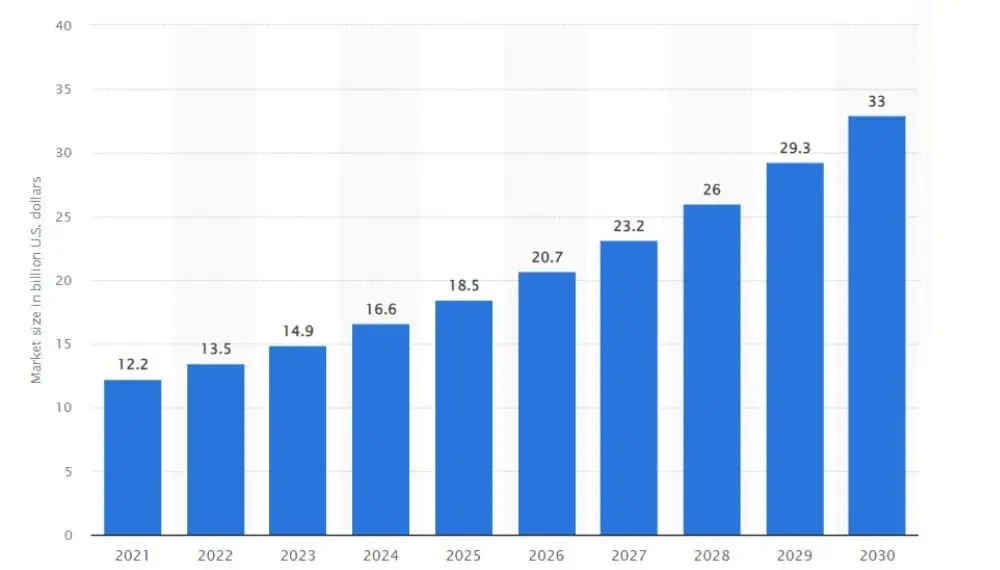
Source: Statista – Retail automation market
However, the impact of the COVID-19 pandemic on the ESL market presents some uncertainties. During times of crisis, retailers tend to prioritize investments in technology that offer a high return on investment (ROI), which may not align with the traditional ESL model.
ESLs effectively bridge the gap between online giants like Amazon and brick-and-mortar retailers by empowering both to adjust prices in real-time, ensuring competitiveness and adaptability in the dynamic retail landscape.
Considering Cost and Complexity Smart Shelf Labels
As a strategy for cost optimization, implementing an ESL system may not immediately appear as the most appealing option. The initial investment required for integrating and maintaining ESL can be substantial, and the long-term cost-saving benefits are relatively modest. This is one of the primary reasons why many traditional retailers still prefer to rely on paper price labels. However, the concerns go beyond the return on investment (ROI).
It’s crucial to recognize that the concept of contextualized pricing is not yet fully established. Legislative and regulatory frameworks vary considerably across different national markets, leading to uncertainty regarding the boundaries between contextualized offerings and potential price discrimination.
Furthermore, dealing with real-time price changes within physical stores poses significant challenges. For instance, a customer may select a product from the shelf at one price only to find a different price at the checkout counter. This disparity increases the risk of allegations of unfairness, either from customers or legal authorities. Consequently, these factors contribute to the hesitation among retailers to adopt ESL systems and real-time pricing on a broader scale.
Conclusion
These Smart shelf labels are transforming the grocery retail industry, bringing efficiency to operations, improving the shopping experience for customers, and ensuring accurate pricing in real-time. Smart shelf weight sensors make the process faster if integrated with a smart label system.
Equipped with sensors and electronic displays, ESLs provide valuable insights, enable better inventory control, and facilitate personalized promotions. As the costs of ESL technology decrease, more grocers are adopting this innovative solution to future-proof their business.
Frequently Asked Questions About Smart Shelf System
Are ESLs Worth the Investment for Retailers?
Absolutely, ESLs are a valuable investment for retailers. They help reduce operational costs, enhance efficiency, and elevate the overall customer experience. With ESL, manual labor is minimized, pricing errors are reduced, and retailers can swiftly update prices and promotions.
What Are the Drawbacks of ESLs?
The primary drawback of ESLs is the initial implementation cost, which can be a substantial investment for retailers. Additionally, these labels depend on a reliable Wi-Fi connection, which can pose challenges in certain store locations.
How Long Can You Expect ESLs to Last?
ESLs typically have a long lifespan, often lasting between 5 to 10 years or even more.
How Do Digital Shelf Labels Operate?
Digital shelf labels function by utilizing wireless technology to display product information, pricing details, and promotions on a digital screen attached to store shelves. These labels can be updated in real-time, allowing retailers to make quick changes to prices and promotions as needed.

